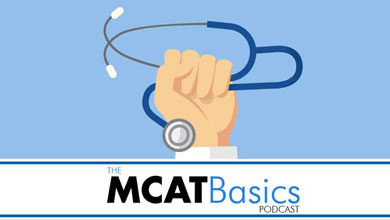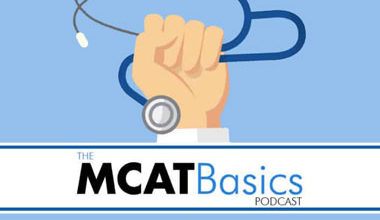Dive into anatomy and physiology of three hormone axes: the hypothalamic-pituitary-adrenal/gonadal axes, and the renin-angiotensin-aldosterone system.
- [01:27] Defining a Hormone Axis
- [02:18] The HPA Axis
- [02:33] The Anatomy of the Hypothalamus
- [03:46] The Anatomy of the Pituitary Gland
- [05:16] The Anatomy of the Adrenal Glands
- [06:50] The Physiology of the HPA Axis
- [16:06] The HPG Axis
- [16:38] The Anatomy of the Gonads
- [19:21] The Physiology of the HPG Axis
- [26:27] The RAAS Axis
Sam breaks down three different hormone axes:
1. The hypothalamic-pituitary-adrenal (HPA) axis,
2. The hypothalamic-pituitary-gonadal (HPG) axis
3. The renin-angiotensin-aldosterone system (RAAS)
The HPA Axis consists of the hypothalamus, the pituitary gland, and the adrenal glands. The hypothalamus is located near the bottom region of the brain. It contains a bunch of nuclei that can be likened to monkey bread. Each nuclei type regulates a different set of hormones. For example, the supraoptic nuclei secrete vasopressin, or antidiuretic hormone. The pituitary gland is located just below the hypothalamus. It consists of the posterior and anterior lobes. The posterior lobe is an extension of the hypothalamus and it stores the hormones that have been secreted in the hypothalamus. The anterior lobe secretes various hormones of its own. An adrenal gland is located above each of our two kidneys. They resemble melted vanilla ice cream and consist of the adrenal cortex and the adrenal medulla. The adrenal medulla secretes catecholamines such as dopamine, norepinephrine, and epinephrine. The adrenal cortex secretes corticosteroids such as aldosterone, cortisol, and androgens.
The HPA axis is known as the stress axis. It begins with the paraventricular nucleus of the hypothalamus. Here the corticotropin-releasing hormone (CRH) is secreted in response to stress. It is a peptide hormone that is 41 amino acids long. CRH stimulates the production of the adrenocorticotropic hormone (ACTH) in the anterior pituitary by binding to receptors on the surface of corticotropes – cells in the anterior pituitary. ACTH is also a peptide hormone, so it is blood soluble, and it travels via blood to the adrenal cortex. At the adrenal cortex, ACTH binds to the ACTH hormone receptor and stimulates the release of hormones called glucocorticoids, such as cortisol. Cortisol is a steroid hormone and thus is not blood soluble. It binds to nuclear receptors and stimulates three processes: gluconeogenesis, the breakdown of proteins, and modulation of the immune system’s responses. All three of these processes are important responses to stress i.e. to produce energy and prevent unnecessary inflammation which slows us down in a stressful situation. The HPA axis involves a negative feedback loop: cells in the hypothalamus and anterior pituitary have glucocorticoid receptors. This allows them to recognize and respond to cortisol. As a result, cortisol in the adrenal cortex can inhibit hormone secretion in the hypothalamus and pituitary gland.
The HPG axis involves the hypothalamus, pituitary, and gonads. The gonads in a male are testes and the gonads in a female are ovaries. The testes are two oval-shaped organs. A cross-sectional view of the testes would reveal coiled tubes, known as seminiferous tubules. The seminiferous tubules produce cells that mature to become sperm cells. In the seminiferous tubules, there are Sertoli cells that nourish the sperm. In the interstitial space in between the seminiferous tubules, there are Leydig cells which secrete testosterone. The ovaries are two oval-shaped organs, located higher up in the abdomen than the testes. This is where the egg matures during the follicular phase of the ovarian cycle. Near the developing egg, there is a layer of cells called granulosa cells, which secrete estrogen. And outside the granulosa cells are the Theca cells. The ovaries are also where the corpus luteum — which secretes progesterone — develops. Above the ovaries, there is a limb-like structure, known as the Fallopian tube. Once a month, an egg is released from an ovary into the Fallopian tube.
The physiology of the HPG axis begins at the hypothalamus where the gonadotropin-releasing hormone (GnRH) is secreted. GnRH stimulates the production of the luteinizing hormone (LH) and the follicle-stimulating hormone (FSH) in the anterior pituitary. GnRH is a peptide hormone which is secreted by the infundibular nucleus, in pulses that increase in magnitude and frequency prior to ovulation, and throughout puberty. GnRH travels to the anterior pituitary where it binds to receptors on cells called gonadotrophs. These receptors are G protein-coupled receptors (GPCR) and stimulate the production of luteinizing hormone (LH) and follicle-stimulating hormone (FSH).
In females, LH stimulates the secretion of estrogen which regulates the menstrual cycle, and is responsible for the development of other female characteristics, including the female reproductive tract. LH also stimulates the secretion of progesterone which has similar effects to estrogen, but also protects and nourishes the endometrium. In males, LH binds to receptors on the Leydig cells, stimulating the synthesis and secretion of testosterone. In females, FSH initiates the growth of follicles in ovaries. In males, FSH initiates the production of Sertoli cells to nourish sperm. Like the HPA axis, the HPG axis also has a negative feedback loop. Testosterone, estrogen, and progesterone can bind to nuclear receptors in the hypothalamus and inhibit the secretion of gonadotropin-releasing hormone.
Finally, the Renin-Angiotensin-Aldosterone System (RAAS) is important for the regulation of blood pressure. This axis begins within the afferent arterioles of the kidneys. Here there exist the juxtaglomerular cells which sit right outside the renal corpuscle. These cells have stretch receptors in their membranes which recognize changes in blood pressure. When blood pressure drops, the juxtaglomerular cells cleave a molecule called prorenin into its active form called renin. Renin is both a hormone and an enzyme, though it is better known for its enzyme activity. Renin cleaves a protein called angiotensinogen (which is produced in the liver) into angiotensin-I. An enzyme called angiotensin-converting enzyme (ACE) converts angiotensin-I into angiotensin-II.
Angiotensin-II causes blood vessels to constrict, stimulates vasopressin production in the hypothalamus, stimulates thirst, and increases sodium reabsorption in the proximal tubule. Also, Angiotensin-II stimulates the release of aldosterone from the adrenal cortex. Aldosterone is a steroid hormone and is the main mineralocorticoid hormone that is produced in the adrenal cortex. Aldosterone binds to the nuclear mineralocorticoid receptors within the cells of the distal tubule and collecting duct of the nephron (in the kidneys). This stimulates the cells to produce more membrane sodium channels, thus causing the cells to reabsorb more sodium increasing the blood volume and the blood pressure.
Please email me if you have any comments or concerns: MCATpodcast@medschoolcoach.com

